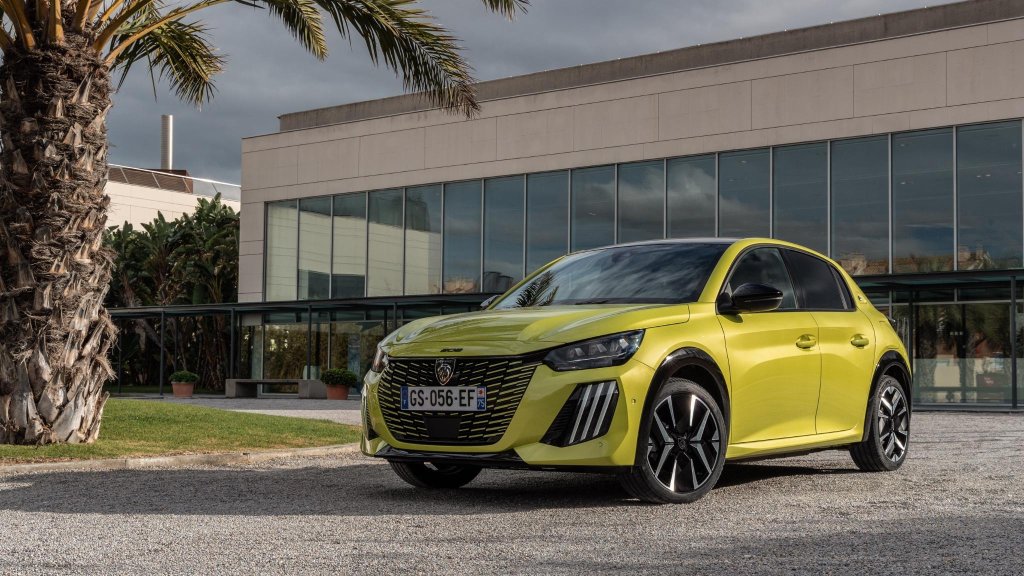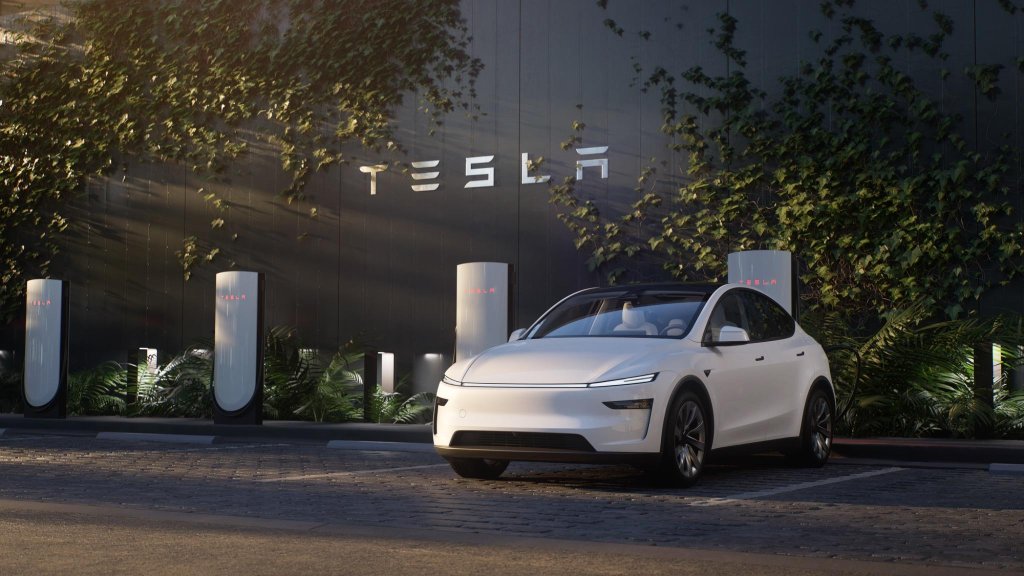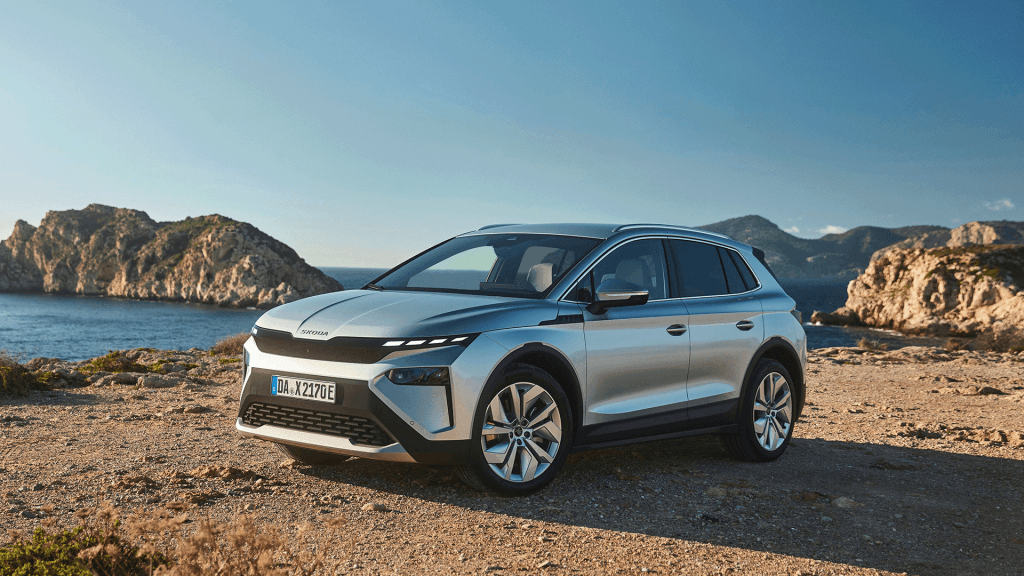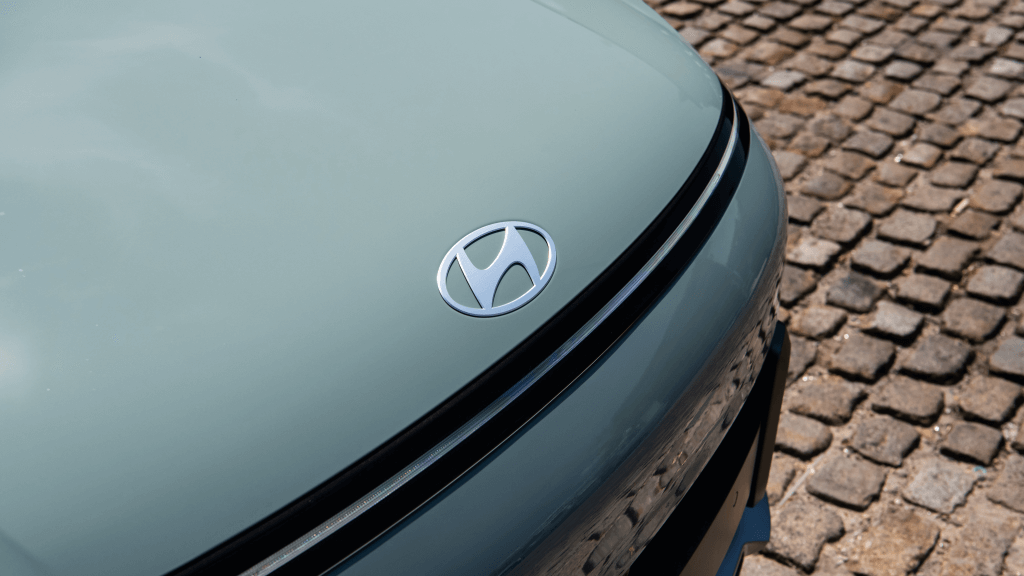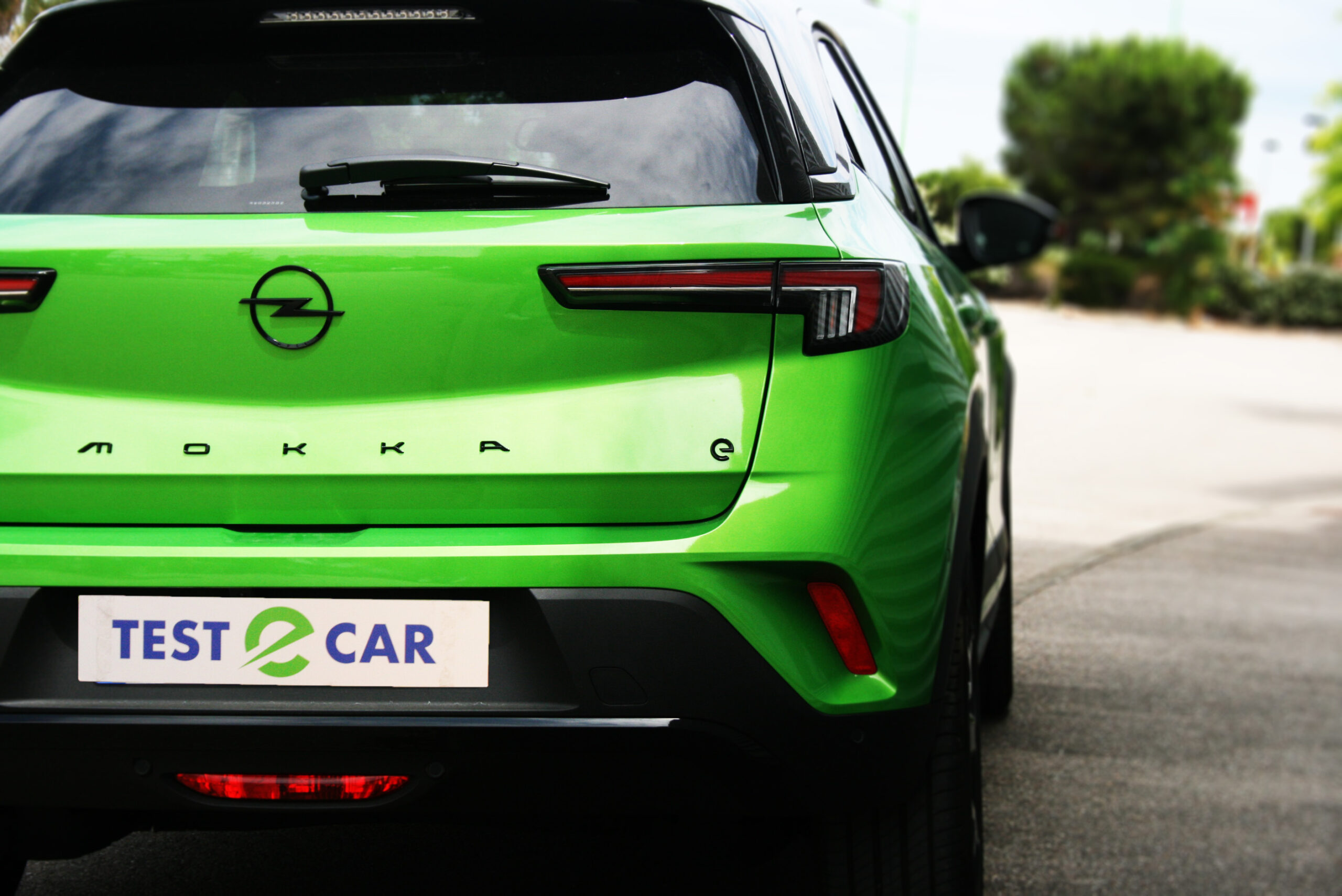Driving electric is an idea that is starting to take hold. Seeing electric vehicles on our roads is a vision that we have more and more. But to think about driving a very compact, 100 % electric sedan with a sporty character is less common. Two letters, one number: i3s… We took the steering wheel of BMW’s new little Bavarian car, the BMW i3s, to see its assets.
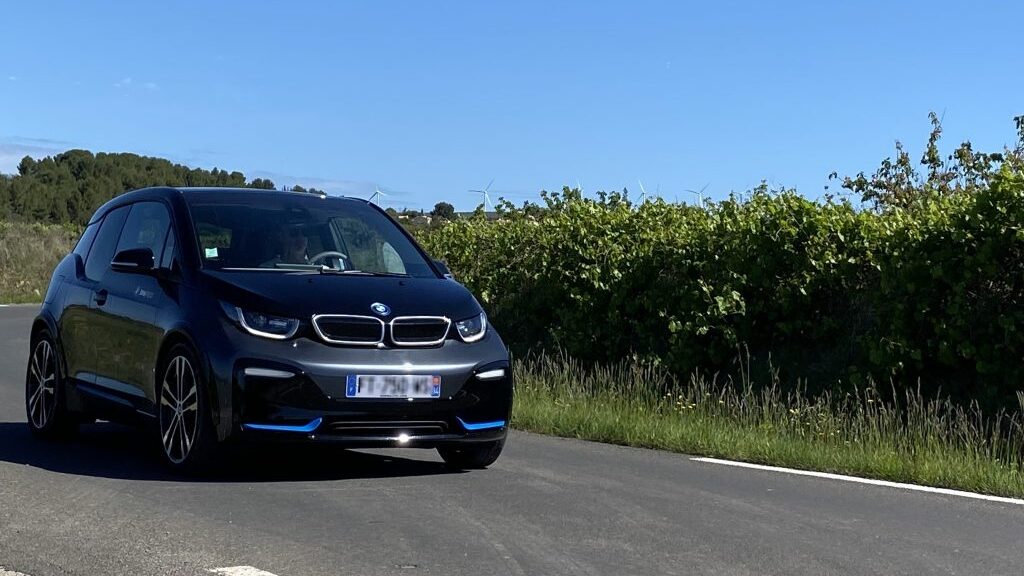
Want some watts?
One thing is for sure, you won’t go unnoticed, no matter how you use it. In the city, as a company car, in a company fleet or for your daily commute, “driving an electric BMW” will be noticed. The BMW i3s is a new power on the road. Want some watts?
With a 42 kWh (120 Ah) battery, (184 hp) and 270 Nm released, 285 km (in WLTP cycle) are promised. That’s quite a jump from the 195 km of the previous version of the BMW i3. But it’s true that the battery was only 33 kWh… (Result: a slight increase in performance with a 0 to 100 km/h in 6.9 seconds and a top speed of 160 km/h (7.3 seconds and 150 km/h for the classic i3).
With its 4 meters long, 1.7 meters wide and 1.5 meters high, and 1,340 km of weight, it’s a real powerhouse. Power, yes, but electric power is also a different way of understanding driving. We should say “drivings”. So, we drove away in this new BMW i3s on various terrains. If electric is often synonymous with urban traffic, we did not go downtown right away.
A “rolling block”
Direction the small and sinuous departmental roads to discover the electric fairy, Munich version… At the foot of the Pic Saint-Loup, in the foothills of the Hérault region, we were able to feel the first sensations distilled by this electrifying BMW i3s. The series of bends allowed us to highlight the driving comfort of the car. With an ultra-light carbon monocoque structure, it is truly a single “rolling block”. An assembly based on adapted glues, which reduces the total mass of the vehicle and compensates for the 275 kg of the battery. A singularity that contributes to a good handling. A good point that confers road-going qualities for those who, professionally, need to cover long distances. This is a compact car that has all the genes that make the German brand one of the best in the world.
What a torque for the BMW i3s!
The BMW i3s is equipped with several driving modes that give different characteristics on the road, namely Eco, Eco+, Normal and Sport. In this case, on our departmental road, we decided to engage the last one. Oh yes! What a character! The suspensions, redesigned to be a bit firm, come into play. But it’s mainly the thrust that is noticeable. The torque goes directly to the rear wheels and it’s a blast! What a torque! A bit much, shall we say. The traction control is accentuated when cornering, but sometimes, you can feel the rear of the car trying to pass in front of you… As for the tires, they crunch well when you change support.
Fast range recovery in the city for the BMW i3s
This enthusiasm is reflected in the range. The 220 km displayed melt away like snow in the sun… So yes, the i3s pushes hard, but don’t abuse it. So, we headed to cities with much heavier and slower traffic to gauge the appetite of this BMW i3s for urban driving. The Normal mode is the one that will be used the most on the road. It offers a very good compromise between performance and range management.
No “crawling” effect
But it is also a way to recharge the battery. You can recover autonomy by using the energy recovery system. That of our model is not adjustable. You will not be in freewheel mode when you let go of the gas pedal. It’s a bit like driving “with one pedal”… So, the engine brake is important, almost to a stop if you don’t intervene. This can be surprising at a standstill, especially if you have used electric vehicles where a certain inertia is palpable (“crawling” effect). This makes it possible to recharge fairly quickly in the city, but it does alter the driving experience a little when traffic is clear.
Hushed and silent universe
So, after a few kilometers, we discovered the congested streets and avenues of Montpellier. An environment where the car finds its place very quickly. Its size allows it to slip by without worry. This also allows it to switch to Eco mode for a substantial gain in autonomy. We agree, the city, is its element…
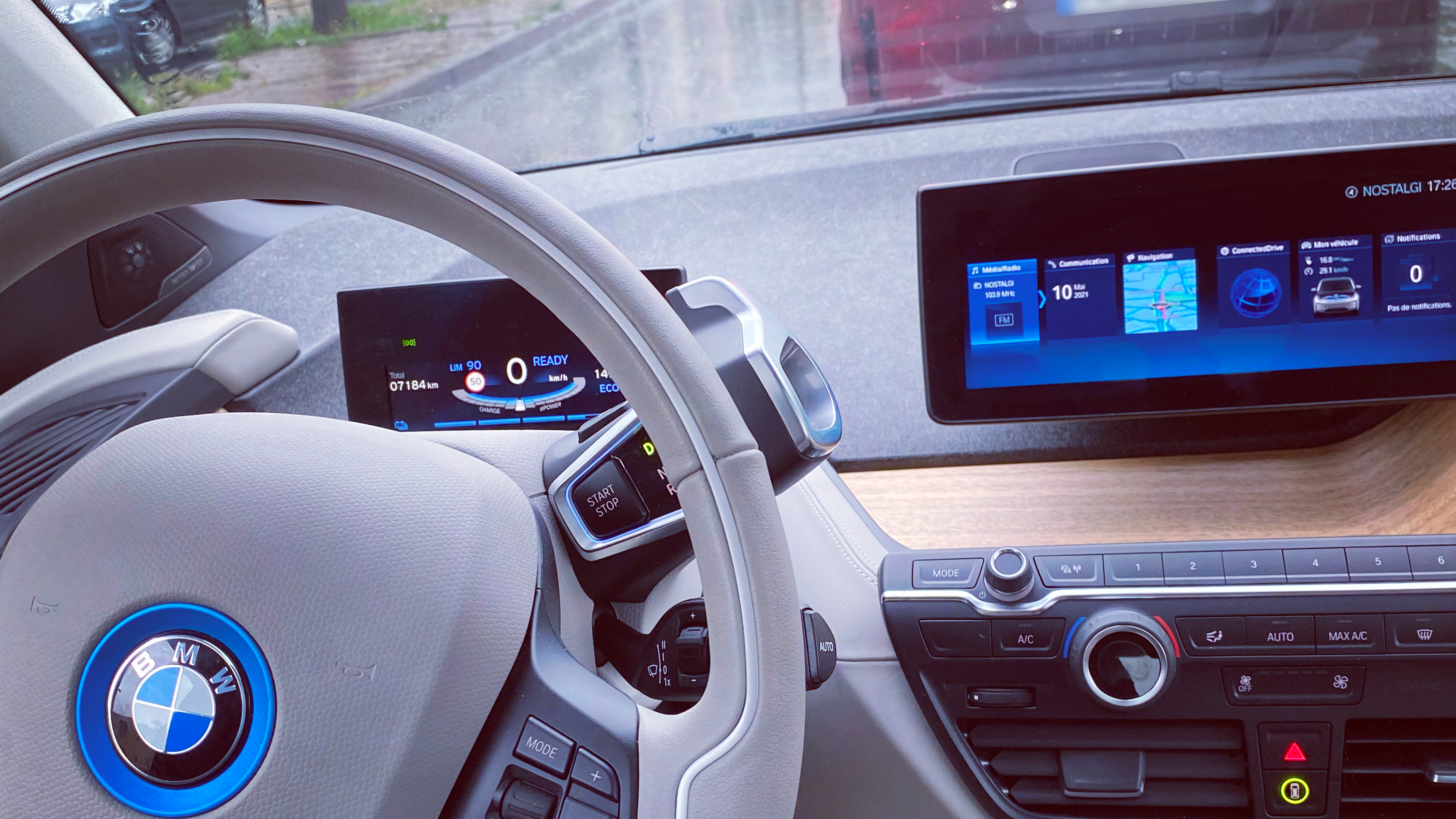
If the difference with the BMW i3 model is noticeable, the sides of the car are widened by 20 mm, increasing the turning circle from 9.86 meters to 10.31 meters. This does not detract from our car to blend into the hypercentre of Montpellier with its winding streets. Quite quickly caught in traffic jams, this is the moment when it reveals other charms. A trip in a hushed and silent universe, the BMW shows off its assets. Already, by switching to the Eco driving mode, the gain in autonomy increases. If you want more, switch to Eco+, but forget about air conditioning and radio… Maximum energy savings come at the cost of reduced driving pleasure.
Very good habitability
Sitting in the heat-regulated, fabric and leather seats, with your hands on the leather-wrapped steering wheel, it’s the “wave”-shaped dashboard that catches your eye. A dashboard made of eucalyptus wood… There is a 10.25″ infotainment screen. A car with which we did not go unnoticed. On a daily basis, as part of your professional activity, or for your private or family travel, you will notice it. BMW is known for much larger models and the size of our i3s may have surprised many.
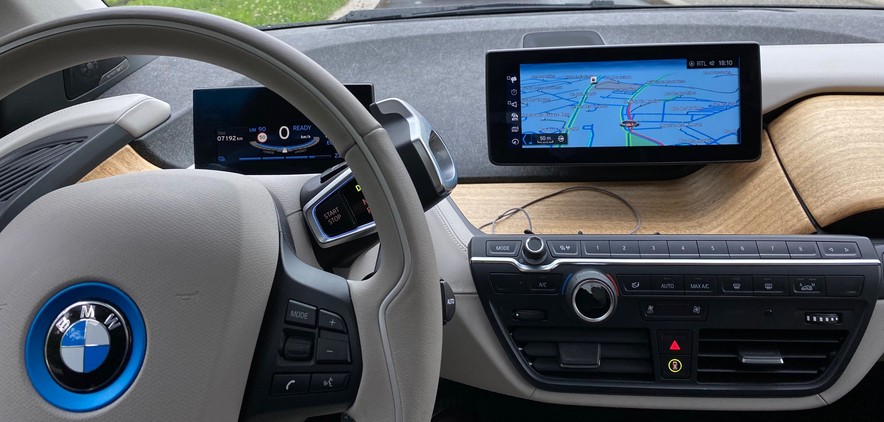
But that doesn’t mean you’ll run out of room. On the contrary, the Bavarian car surprises with a very nice habitability that will make it a usable car, for any use. First of all, the i3s is an interior space that reveals itself in a singular way by its access. The German compact car has an opening with asymmetrical front doors. The rear doors are shorter than the front ones.
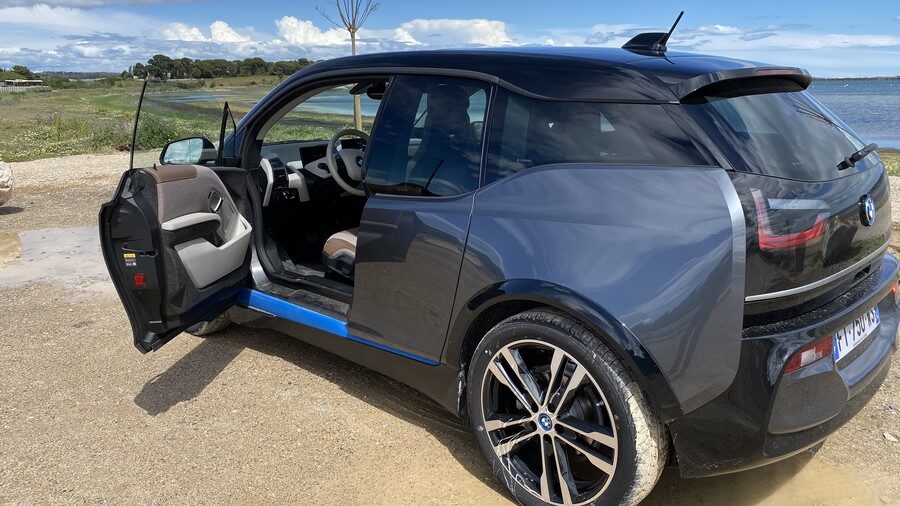
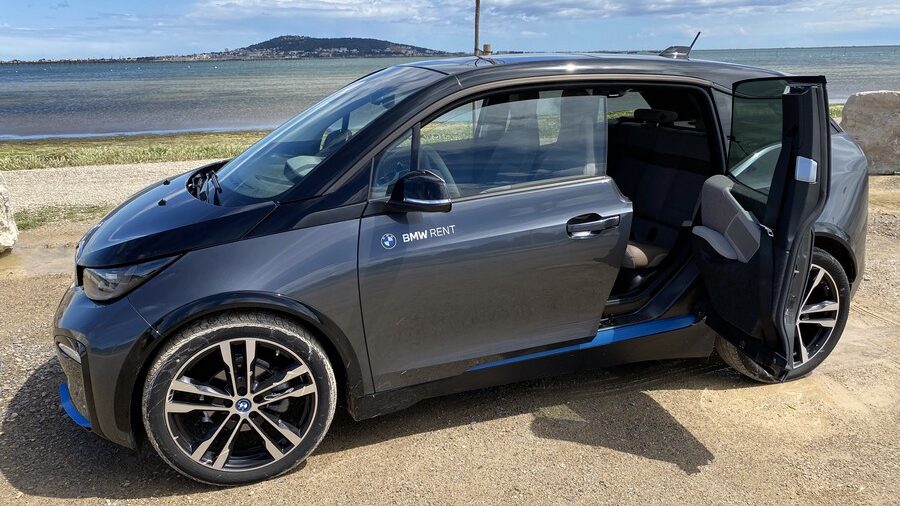
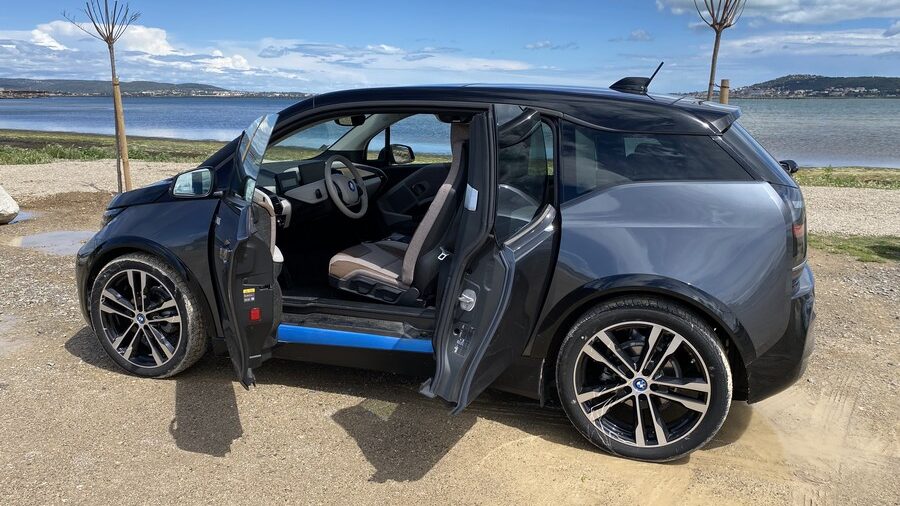
However, the rear passengers will only be able to take place on the bench if the front doors are opened beforehand. The handle to open the rear doors is only accessible in this case, by handles placed behind the headrests of the front seats… You have to think a little about the order of opening the doors!
A cleaving style
Well, in the back, we can’t say that the carrying capacity is the strong point of the car. With 260 liters of capacity, the uses for the departures on vacations are reduced, but for week-ends or for transport of small volumes, it is satisfactory. Note that another small trunk is located at the front, under the hood, where the charging cables are housed. In the end, driving a BMW i3s means wanting to drive electric, but wanting to project a certain image. With its distinctive style, it’s a way to drive electric. The autonomy is good for its city use. So you can assume this premium aspect. But it’s hard to stay below €45,000, if you let yourself be tempted by a few options(1). An excellent second car for another image of electromobility, Munich version.
Pierre-Jean Côme
How to recharge the BMW i3s?
For fast charging, the Combo was chosen by BMW with a charging time of 39 minutes at 80% with a 50 kW terminal. For charging on a domestic socket, allow 11 hours and 7.5 hours with a 3.7 kW terminal. If the 11 kW charger is chosen as an option, the charging time of the BMW i3s drops to only 2 hours and 45 minutes, but you still need to have a charging station delivering this power at home on the public highway. The charging of the BMW i3s takes place at the hatch on the right rear wing.
It contains a Type 2 connector with a charger of up to 11 kW for connection to AC wallboxes. For fast DC charging, there is also a CCS combo connector for charges up to 50 kW. Both the Mode 2 household plug cable and the Type 2/Mode 3 Wallbox cable are included as standard.
- (1) Advanced Serenity Pack: 1 890 € (GPS Professional navigation, real-time traffic information, Harman Kardon audio system, hands-free key)
- Advanced Parking Pack: 1 000 € (Backup camera, front parking radar, hands-free automatic parking)
- Advanced Safety Pack: 1 000 € (Braking and collision warning, adaptive cruise control with traffic jam function, sign reading)


